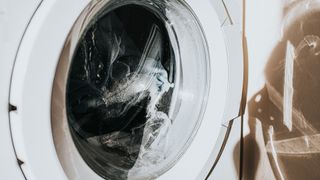If it’s within your budget, one of the best things you can do to lower your energy bill is invest in a newer washing machines that features Energy Star certification, as these will be far more efficient than older appliances. Read our best front load washers (opens in new tab), best washer dryer combos (opens in new tab) and best top load washers (opens in new tab) guides for more information on selecting the right appliance for you.
Reduce your washing machine bills
Depending on your energy tariff, prices might vary during the day due to demand. Prices will be higher in the evening, between 4pm and 7pm, as more people are using appliances and consuming electricity. If you are on a variable tariff, avoid using your washing machine during those hours, and run a cycle between 10pm and 5am instead. Be careful not to put a load on and go to bed, though, as this presents a fire risk! Here are a few other key tips to help keep your energy bills low through adjusting your washing machine usage…
- Run colder cycles. While you’ve probably been told that it’s easier to wash things at higher temperatures, most of your laundry doesn’t need to go through a hot wash every time. In fact, hot washes can fade and shrink clothes over time. Most of the energy consumed by your washing machine goes towards heating the water for your washes, so reducing the temperature goes a long way towards saving you money. Prioritize those hot washes for very dirty clothes, sportswear and bedsheets.
- Fill up the drum. Sometimes life gets in the way and you need to wash something urgently, so you only fill your washing machine up to half its capacity. However, this obviously uses more energy per item washed, and means you’ll run more washes than if you’d filled it up completely. As much as possible, avoid small washes and fill your washing machine to its full capacity.
- Maintain and clean your washing machine. Same as with any appliance, your washing machine needs regular care. Make sure you deep clean it once a month, removing any potential mold from hard-to-reach areas. This will help your machine run more efficiently and avoid your clothes from smelling, saving you from more washes! If you’re after more information, we’ve compiled a whole guide on how to clean your washing machine (opens in new tab).
- Air dry where possible. One of the most energy-consuming parts of the washing process is tumble drying. While it’s very convenient, especially if you’re time-pressed, if you have the option it’s best to leave your clothes to air dry. If you have no other option but to run your tumble dryer on a regular basis, invest in dryer balls which will quicken the drying process. Our guide to the best dryers (opens in new tab) can also help you find the most energy-efficient appliances. Discover more home guides… Best dishwasher (opens in new tab) Best french door refrigerators (opens in new tab) Best side-by-side refrigerators (opens in new tab) Best ovens (opens in new tab)






